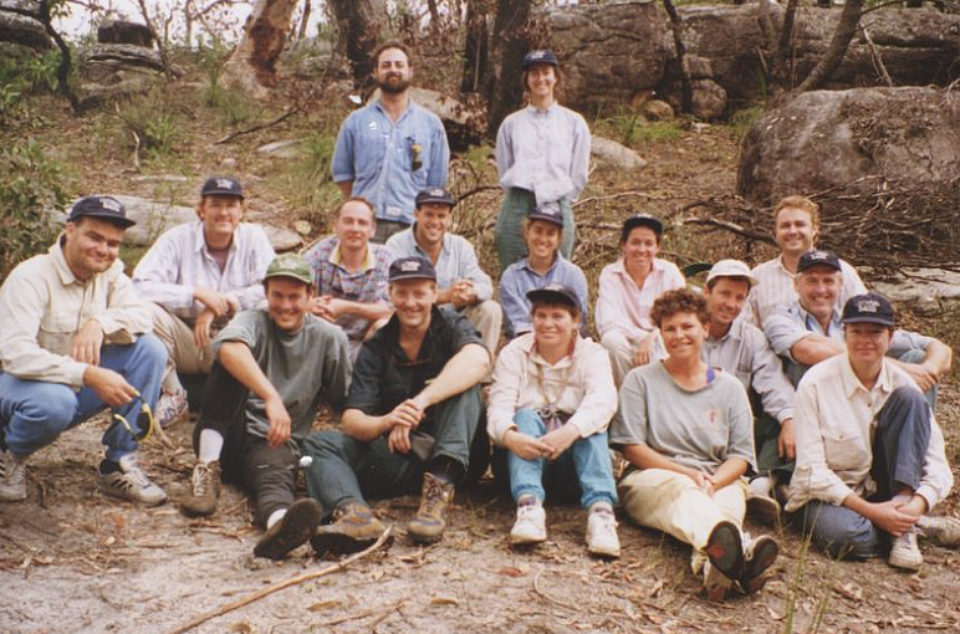
ICDA and BoardPro partnership unlocks digital governance tools for not-for-profits nationwide
Posted on 10 Dec 2025
Adele Stowe-Lindner, Executive Director, Community Directors The Institute of Community Directors…
Posted on 06 Aug 2024
By Matthew Schulz, journalist, Institute of Community Directors Australia

The federal government has signalled support for major tax donation reforms, a big push for the community foundations model and a desire for philanthropists to step up when it comes to boosting generosity.
Speaking to more than 1000 delegates at the Philanthropy Australia conference in Adelaide this week, Charities Minister Andrew Leigh laid out the government’s charity agenda for the rest of its term, less than a month after the Productivity Commission’s review into philanthropy was released.
His keynote speech, “A symphony of impact”, may not have been music to the ears of everyone in the room, given the lack of absolute commitments to adopting the recommendations of the review. The minister was also silent on the controversial decision to quarantine school building funds from reforms.
But most of the people present got the feeling that Labor was serious about its agenda to double philanthropy by 2030.
Most delegates were keenly awaiting indications of how the government would move ahead on changes to deductible giving recipient (DGR) rules recommended by the Productivity Commission, which would give up to 15,000 more charities special status allowing their donors to claim tax deductions.
While he said the government would take its time to fully respond to the 468-page review, Dr Leigh showed strong support for the work of Australian community foundations, which were “singled out in the report … for the way they can build social capital”.
New laws passed in June created new general DGR categories for community charity trusts and community charity corporations. The minster said criteria for the new categories would be released for consultation by the end of the year.
Community foundations are charity funds aimed at helping local communities, with 40 already operating in Australia to encourage donations and invest in communities.
But the minister believed those community foundations could become an engine room of philanthropy in Australia.
Community Foundations Australia describes the foundations as “a sustainable model for philanthropy”, and the model won the support of Philanthropy Australia in its submission to the Productivity Commission’s review.

“We’re not looking for one leitmotif to double giving and boost social capital. But if we were, community foundations at a meaningful scale might be it."
Dr Leigh implied those foundations could be a better “fit for Australia’s national character” than some of the large philanthropic funds found in the United States.
“I’m coming to think that a better ambition would be to replicate Canada’s successes with the community foundations model.
“Community foundations are giving structures that are community owned and managed, and that make grants to support specific needs of their local community. They draw on local networks and local knowledge to identify needs that government and service providers can’t register.
“It feels more democratic, more egalitarian, and it matches the government’s ambition for charities and for philanthropy.”
He said Canada now boasted such foundations in more than 200 communities and this had been partly driven by tax changes, such as that just enacted here.
“With the recent passage of our own bill to create a new deductible gift recipient category for community foundations, we’ve set up the same launchpad for this democratising and socially engaging vehicle for giving.
“We’re not looking for one leitmotif to double giving and boost social capital. But if we were, community foundations at a meaningful scale might be it,” the minister said.
As for the rest of the review, Dr Leigh stressed the government would not be rushing into its formal response, despite the desire by many at the conference to know whether the government would be supporting other recommendations.
Dr Leigh said the government “wanted to allow a reasonable window for a direct conversation with the sector as we consider its recommendations”.
But he said the government had already taken action by:
This included streamlining DGR applications for some organisations, continuing work to “harmonise” fundraising rules, and supporting the Australian Bureau of Statistics to conduct a new “general social survey” which would help inform the sector’s work.
“I’m optimistic we will soon be able to start building on the work that we’ve already done to establish those four pillars the Productivity Commission inquiry identified.”
The minister indicated that the government would not shoulder all the responsibility for seeking to double philanthropy by 2030, but would look to everyone who had responded to the inquiry to contribute.
“Our government has a goal of doubling giving. But this is not just a government objective – it’s a shared objective. We know we have a critical role to play, as it’s only governments that can make policy decisions. But doubling giving is not just about policy decisions.”

“I'm optimistic that the DGR reform is on the agenda. I mean, it's the key thing. If we can achieve that, we can cut red tape across the sector [and] it will unlock so much giving."
He said philanthropists, charities and other giving advisors would all play a part.
The minister namechecked several initiatives from the philanthropic and charity sector that were doing their part to increase generosity, including:
“Whether other foundations adopt such approaches is not for government to decide – but government is certainly not standing in the way of new, different and better approaches diffusing across the philanthropic sector. We welcome it.”
Philanthropy Australia CEO Maree Sidey said her immediate response to the minister’s address was to feel more positive about the prospects for reform.
“I'm optimistic that the DGR reform is on the agenda. I mean, it's the key thing. If we can achieve that, we can cut red tape across the sector [and] it will unlock so much giving.
Ms Sidey described the recent changes to DGR status for community foundations as a positive development but said they should be seen as a “downpayment” for the much broader DGR reforms that the sector needed.
“As the minister said, the government's role is to create the policy to make the changes for the enabling environment. It's our responsibility to then put that to the best use.”
“Community foundations, First Nations philanthropy and cutting red tape around DGR reform are the three big issues. Now we've got to get them done.”
Read Dr Leigh’s speech in full

Posted on 10 Dec 2025
Adele Stowe-Lindner, Executive Director, Community Directors The Institute of Community Directors…

Posted on 10 Dec 2025
The Australia Institute has called on the federal government to force Australian businesses to be…

Posted on 10 Dec 2025
Economic empowerment is essential to enabling recovery, restoring agency and preventing future…
Posted on 10 Dec 2025
A long-time advocate for rough sleepers in northern New South Wales has been named her state’s…

Posted on 10 Dec 2025
What a year 2025 has been, particularly at a national level where the Parliament and politics as we…

Posted on 10 Dec 2025
Anyone working in an organisation knows it: meetings follow one after another at a frantic pace. On…

Posted on 10 Dec 2025
As a qualified yoga instructor who learned the practice in her hometown of Mumbai, Ruhee Meghani…

Posted on 10 Dec 2025
Community Directors trainer Jon Staley knows from first-hand experience the cost of ignoring…

Posted on 10 Dec 2025
Stressed, overwhelmed, exhausted… if you’re on a not-for-profit board and these words sound…

Posted on 10 Dec 2025
The Institute of Community Directors Australia trains over 22,000 people each year, which gives us…

Posted on 09 Dec 2025
The late Sir Vincent Fairfax is remembered as a business leader, a chairman of AMP, and an active…

Posted on 08 Dec 2025
A pioneering welfare effort that helps solo mums into self-employment, a First Nations-led impact…